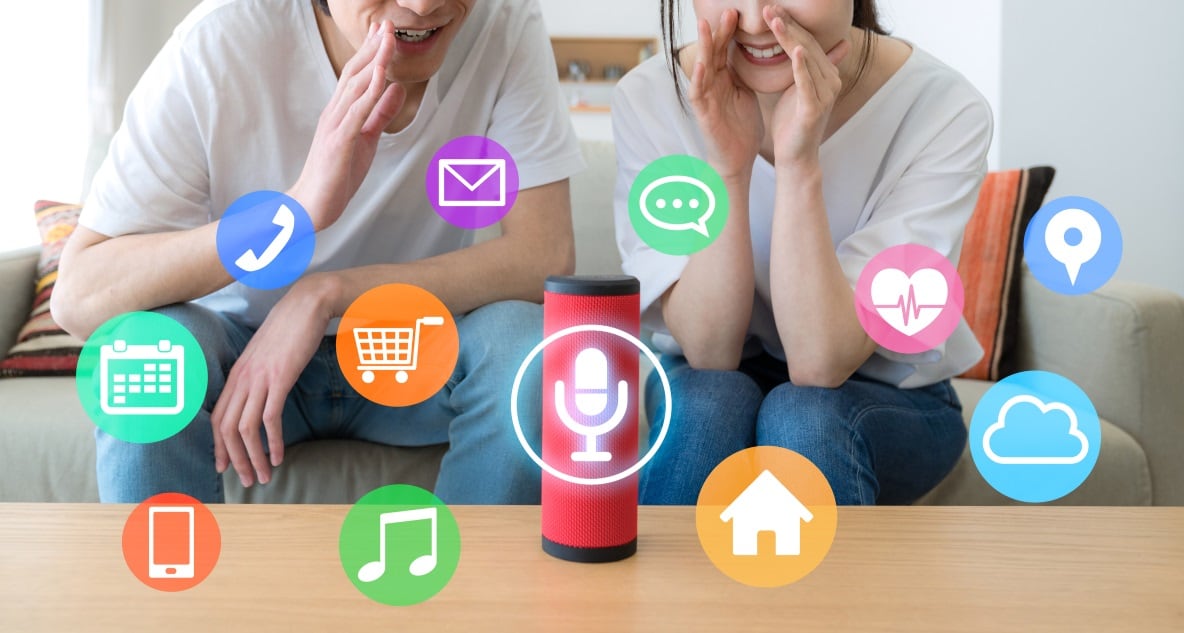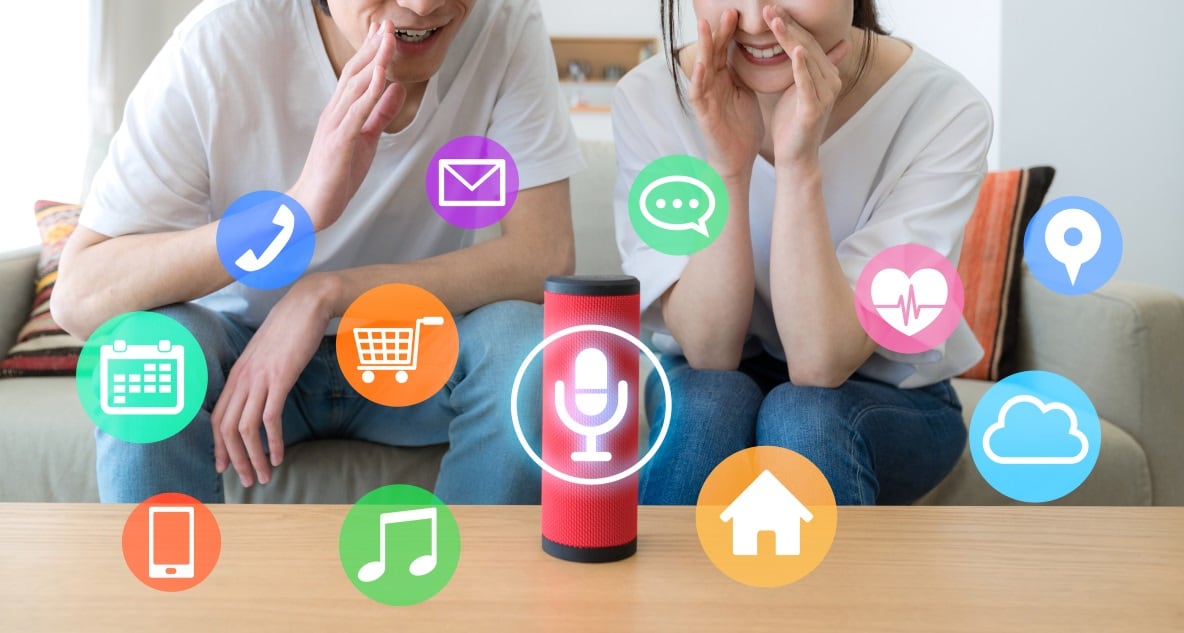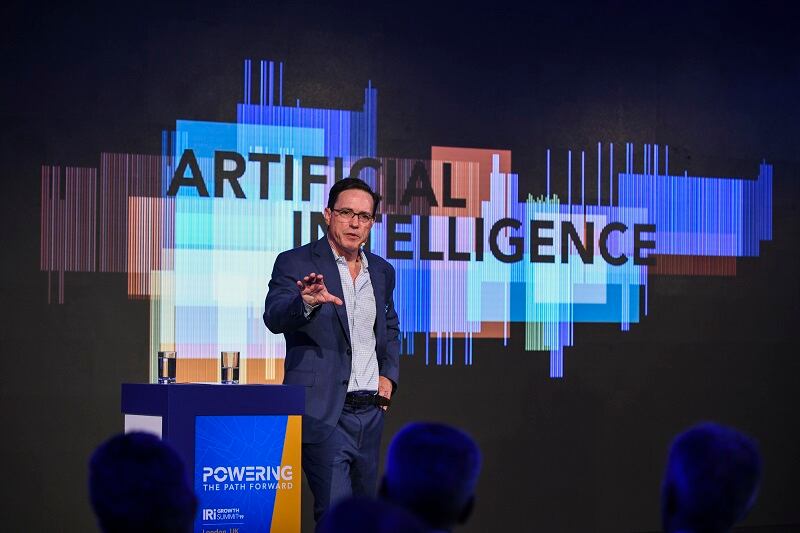New data reveals that 60% of UK smart speaker owners have used them to make a purchase in the past year. In fact, the survey commissioned by AI data-driven agency Artefact revealed almost a quarter said they had done so in the past week.
The research also found that around one-third of smart speaker owners interact with brands via their device. The companies that people say they have interacted with are dominated by tech brands, especially Amazon. But people also reported communicating with takeaway services such as Dominos and – significantly for FMCG – supermarkets like Sainsbury’s.
‘This represents a huge opportunity’
While the technology is still in its relative infancy, ownership of smart speakers is no longer the niche preserve of early adopters. Indeed, four in 10 UK households already own smart speakers.
“This represents a huge opportunity,” Sarah De Martin, managing director at Artefact, told FoodNavigator. “Voice gives brands a unique opportunity to interact with and engage with consumers on a one-to-one basis.”
De Martin said that currently voice isn’t something any food or beverage brand has ‘really cracked’. However, she suggested it will prove a ‘real differentiator’ for those who get it right.
This means thinking about how to integrate voice tech into a broader cross-channel strategy. In particular, De Martin warned against jumping on the bandwagon with a ‘gimmicky voice skill’.
“If you’re giving your brand a literal ‘voice’ for the first time you need to make the right impression and offer something that’s genuinely useful in supporting and supplementing other channels in the marketing mix,” she stressed.
Artefact worked on developing a ‘shopping list assistant’ for French supermarket Monoprix. “It feeds into the multi-channel offer to recommend additions to customers’ basket based on their previous purchases and behaviour. It was a significant undertaking. It not only involved sophisticated voice recognition and AI algorithms, but also meticulous cross-referencing and mapping of the entire Monoprix inventory at SKU level.
“We also needed to work closely with the brand owner to define what the service would sound like, the tone, the gender, the accent. It would be an even bigger job if we’d needed to localise it across market. Developing a truly useful voice service requires a huge commitment – a multi-disciplinary team, time and dedication. However, it’s time well spent and Monoprix saw a significant uplift in attracting new customers.”
Rob Carpenter, founder and CEO at Valyant AI, also believes the potential of voice tech for brands is transformative. “The opportunities are massive; everything from optimising overhead, increasing average order size, employee stability, reducing costs related to hiring and firing, reducing fraud, bringing data driven approaches to marketing and up-sells. Voice technology and, more broadly, digital employees are going to be akin to opening up Pandora's box in terms of challenges and opportunities.”
Voice search: boost or bust?
Search optimisation that reflects natural speech patterns will become vital for brands, who will come under more pressure than ever to come out on top of the search page. This can potentially favour bigger brands.
“Voice plays to our natural speech patterns. If you go into a cafe, you’re much more likely to ask for something specific – a coke, rather than a soda. Alternatively, we would ask what soft drinks they offer. If you’re Coca Cola you’d want to be at the top of that list and search optimisation for voice will become an increasingly significant consideration,” De Martin explained.
At the same time, voice search also presents a significant threat to brands. Carpenter suggested voice tech will effectively shrink the shelf space available to grocery brands and restrict their ability to convey information to consumers.
“Voice search is potentially one of the bigger threats facing brands over the next decade. Customers are generally turning to voice to have their needs met in a quick and efficient manner. With online search, customers can review an entire page of products and will make purchase decisions based on things like pictures, reviews, shipping times, etcetera. With voice, customers likely only want one to three options presented, and they'll making buying decisions based on extremely quick soundbites.
“In essence, the shelf-space shrinks from dozens on a physical store shelf, to half a dozen on a web page to only two or three with voice. How to be ranked in these two or three options and what to say is going to be extremely important to brands in the near future,” he predicted.
Voice is a ‘viable channel’
While voice might not be the defining channel for consumer communications or purchases today – chances are that in the very near future it will be.
The rapid development and rollout of the tech means brands risk falling behind if they adopt a ‘wait and see’ approach.
“Everyone needs to start thinking seriously about voice as a viable channel. An analogy would be brands that didn’t embrace mobile quickly enough - you can’t afford to play catch-up,” De Martin warned.
She also expects fast uptake among key consumer groups such as Gen Z and Millennials: “You also need to bear in mind that voice search launched on mobile devices a decade ago. A generation is growing up with voice and what might seem ‘unnatural’ to older people will inevitably become a standard means of interaction with the digital world.”
Brands that are preparing for an increased adoption of voice tech still face a number of technical hurdles, Carpenter added.
First and foremost, speech-to-text – or the ability to understand what a customer has said is not ‘solved’. “It's critical that brands test how adept the major speech-to-text platforms are at accurately transcribing each their product names. Businesses should test their brands on the major platform and look at their accuracy with accents, colloquialisms and various languages. If their accuracy isn't great, brands should consider building their own language models, and then making them available to developers, just like brand identity items,” he suggested.



